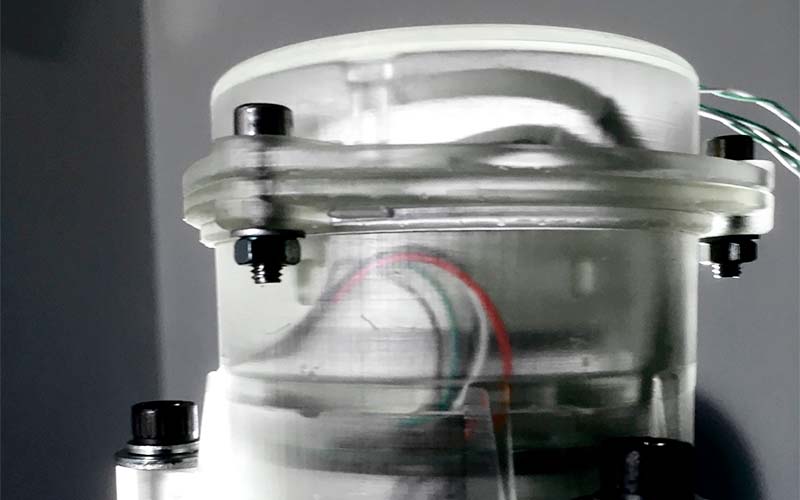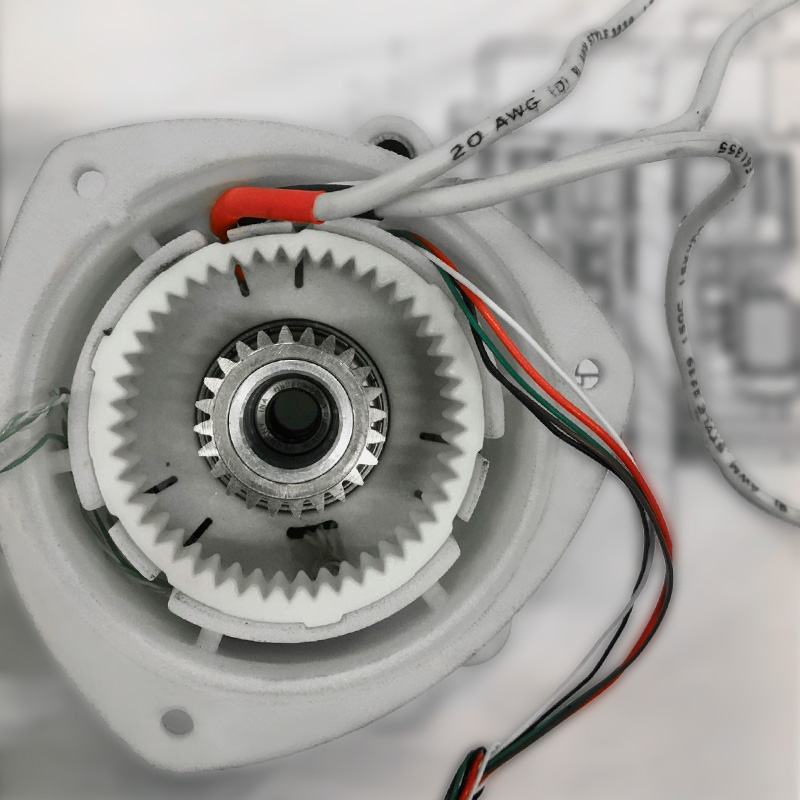
The Research and Development department of FAIST CPS Business Unit is constantly pointed towards the future, focusing on how to propose to our customers the most suitable solutions to tackle the ecological transition happening in the automotive field. In this article, we spoke to Stefano Benicchi, Product Design Manager and part of our R&D team, on the work done for the design of the new FAIST GSEA, the Gear Shift Electric Actuator specifically developed for mild hybrids and electric engines, in collaboration with E-lectra, the spin-off company born from the collaboration between the University of Cassino and FAIST.
First of all, please present yourself to our readers.
My name is Stefano Benicchi, I was born in 1974, in Perugia. After graduating in Mechanical Engineering, I’ve joined FAIST in September 2001.
Twenty-one years ago, I’ve started to work for what was then FAIST’s Patented Product Division (now our CPS BU), that was mainly focused in automotive parts and assemblies’ production. It was the golden age of pneumatic actuators for turbochargers.
Over the years, I have gained a lot of knowledge about products, and met many good people among our colleagues. I have covered different roles from Application Engineer, to Project Manager, Product Engineer, R&D Manager, and I am currently Product Design Manager. I have had the chance to give my contribution in the development of new products, the introduction of new process technologies and the extension of our know-how. Special thanks to my team and our Management, that each in their own way, allowed me to go through such path.
GSEA: tell us about the inception of this product. Where does the need for its development come from?
Basically, this need comes from FAIST's desire to extend our range of electric actuation, embracing the ongoing developments in terms of automotive engines and ecological transition. Specifically, the concept arises from the need to manage the two-speed gearboxes that are envisaged in the architecture of high-performance electric and hybrid vehicles. The first electric motors were direct-drive, or at most with a fixed reduction ratio; as EVs and hybrids become increasingly popular, advanced and more affordable, we expect that two - or even three - speed gearboxes will be increasingly common. These allow to run the vehicles to give the best combination of performance and efficiency, ensuring a good acceleration at low revs and high speeds, with high yield.
What has been, until now, the genesis of the project?
In 2019 we began to take an interest in the subject, to understand if the application and its specifications were covered by an actuator with DC motor (brushed), in direct current, similar to those already present in FAIST CPS’ product range. This type of actuation requires a certain load torque to move from a given position to another, as in other applications, but with a particularly fast and precise response. We realized through simulations that the brushed motor did not respond to those needs in terms of response times, so we began to investigate the brushless motor, which also has advantages in terms of efficiency and duration of life.

It is a co-development within FAIST group, what about this aspect?
E-lectra, spin-off company born from the collaboration between the University of Cassino and FAIST, is responsible for developing the electronic architecture, the driver and firmware part, in collaboration with FAIST CPS R&D team. E-lectra’s team brings a solid experience in the field of designing and manufacturing powertrains and equipment for hybrid and electric vehicles, so it was very natural for us to decide to develop our concept with them.
Where are we currently? Tell us about the latest developments.
In 2021, after the team was through with choosing the size of the electric motor, the project was assigned to me. I began to outline a concept to present the application, and we proceeded with the construction of characterization prototypes. In about 8 months we have designed and built 5 prototypes with 3D-printed housings in various highly-technological polymeric materials. These will be used to characterize the product and the development of the control driver, and to fine-tune the cockpit (which is the pilot-interface of the prototype bench) that will guide us in the next steps of the product development.
The characterization is underway at this very moment, with excellent results compared to the performance targets we have set ourselves. We aim to develop a product that can perform two strokes (hypothetically from 0° to 180 ° and from 180 ° to 360 °), with an applied load of 1 Nm, in a time of about 100 milliseconds.
The next steps?
In order to complete the characterization, we will build another set of prototypes by the end of the current year. From there, the further development of the concept will be carried out in parallel with the construction of functional prototypes to be used for the various tests (vibration, endurance, endurance in temperature ...). At the same time, we will carry on the development of the control part with E-lectra, and work with our Purchasing team and external partners to set-up a robust supply chain for the various components to be sourced.
How does this product fit into the development strategy of the FAIST CPS electric actuators range?
To put into contest the newest steps, I think we should look at the FAIST’s actuators evolution story, going through its main stages. At the beginning, we were just manufacturing pneumatic actuators, based on our customers' drawings – essentially doing industrialization projects. In the very early years of the Third Millennium, we started the design activity. In those years, we began to offer what is defined as the “black box approach”, where customers ask for products that are based on development and design done by suppliers.
One of the first strategic R&D projects we did was the development of the Hall linear position sensors. Most OEMs wanted pneumatic actuators to give position feedback for improved turbo performance and emissions control, to be done with a closed loop control system. We succeeded with the development of two products, and I think this step was a game-changer for FAIST, as it opened new scenarios. Moreover, a variety of pneumatic actuators with FAIST sensors are still in mass production.
The next key step we took was to look at electric actuators, more accurate and faster than pneumatic ones. Basically, the target was to develop a Rotary Electric Actuator, powered by a DC motor plus a gear train reducer and equipped with a rotary Hall position sensor. So, we designed the wastegate REAs line first and then the variable turbine REAs family. The production lines developed by our advanced manufacturing engineering team are ready, and the mass production for some applications is starting right this year.
The limit of the current range of electric actuators we produce is that they have no electronics on board, but are driven directly by the ECU, according to the OEM control strategy. Conscious of this, we decided to develop a smart actuator with a BLDC (brushless DC) motor, in order to cover the above-mentioned potential in terms of efficiency and duration of life, and, finally, expand the actuation portfolio.
So, what do you see as the next steps of this path that FAIST CPS’ R&D did?
GSEA (Gear Shift Electric Actuator) is just the pioneer application in this league. It’s aimed to extend Faist knowledge and cover a wider application range. I know that not every single project can land in mass production, but the most create the basis for those who reach this target.
In fact, a lot of know-how building was done by our R&D Team over the years. Just to mention a few expertise areas: Hall sensor, DC motors, gears, electric contacts and lead frames, venting valves. At the same time, also new processes were introduced, for example, plastics heat staking, complex part over-moulding, laser and ultrasonic welding. Therefore, we’re very positive about the future to come.
When will this product be ready for market?
Probably not before 2 or 3 years, according to my experience. Of course, there could also be the need to change the final application or the specifications during the run. Part of the story is still to be written!



